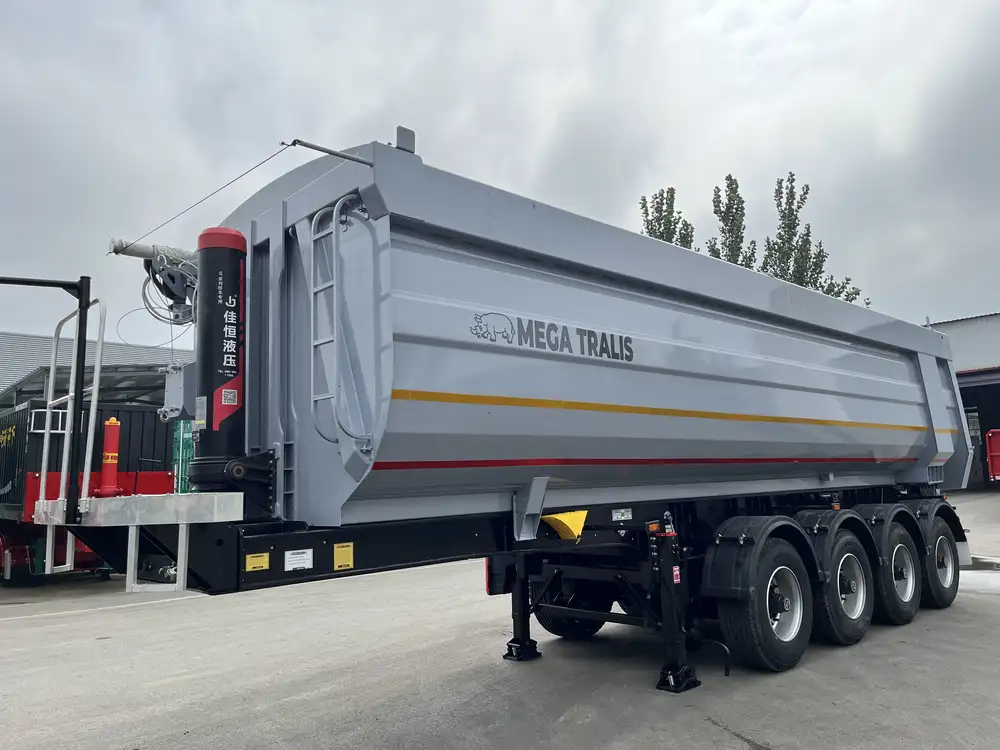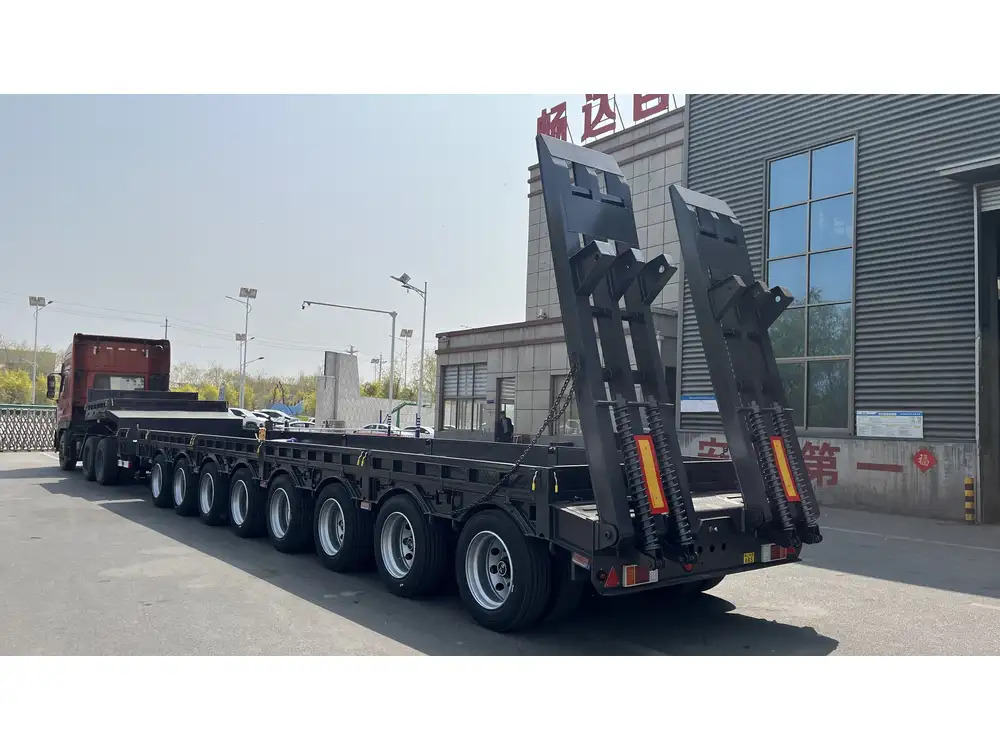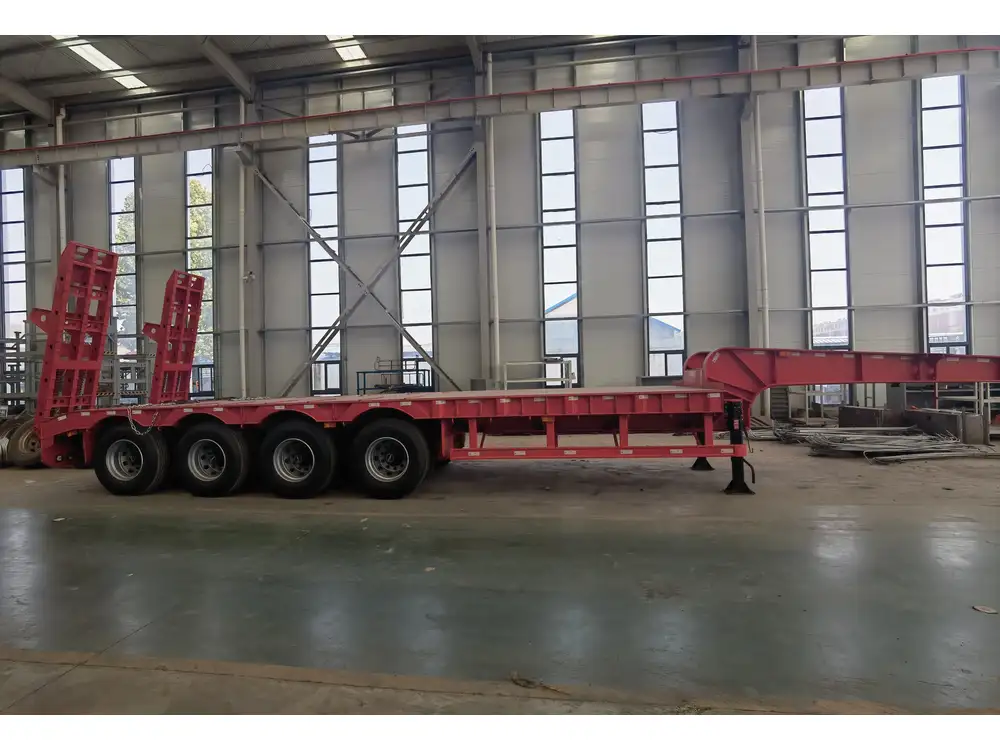When it comes to logistics and transportation, understanding how to maximize space in a 48-foot semi-trailer is critical for cost efficiency and operational effectiveness. This guide aims to address the fundamental question: how many packages fit in a 48′ semi-trailer? We will dissect the various elements influencing capacity, enabling you to make informed decisions for your shipping needs.
Dimensions and Specifications of a 48′ Semi Trailer
Standard Dimensions
- Length: 48 feet
- Width: 8.5 feet
- Height: 13.5 feet (including the trailer floor)
- Floor Space: Approximately 3,840 square feet

Payload Capacity
- The maximum payload capacity of a 48′ semi-trailer typically ranges between 26,000 to 28,000 pounds, varying based on the trailer design and materials carried.
Volume Capacity
- General volume capacity is around 3,000 cubic feet. This volume is a critical factor when determining how many packages can fit.
Understanding Package Dimensions
To start calculating how many packages can fit inside a 48′ semi-trailer, we must understand the average dimensions of the boxes being shipped.

Common Package Sizes
| Package Type | Dimensions (Length x Width x Height) | Volume (Cubic Feet) |
|---|---|---|
| Standard Box | 2′ x 2′ x 2′ | 8 |
| Large Box | 3′ x 2′ x 2′ | 12 |
| Palletized Goods | 4′ x 4′ x 4′ | 64 |
| Freight Pallet | 48″ x 40″ (equivalent to 4′ x 3.33′) | 12.5 |
Note: The above dimensions vary by industry and specific needs, thus influencing the total cargo capacity.
Calculating the Capacity
Step-by-Step Capacity Calculation
Determine Usable Space: The interior of a 48′ semi-trailer can be affected by wheel wells, tie-downs, and other accessories, thus slightly reducing usable space. Assuming around 90% usable space:
- Usable Volume = Total Volume x Usable Percentage
- Usable Volume = 3,000 x 0.90 = 2,700 cubic feet.
Calculate Packages Based on Dimensions: Assuming the use of standard boxes as the primary shipping units:
Package Type Volume (Cubic Feet) Packages That Fit Standard Box 8 2,700 / 8 = ~337 Large Box 12 2,700 / 12 = ~225 Freight Pallet 12.5 2,700 / 12.5 = ~216
With this basic calculation, it is important to note that a combination of various package sizes may increase efficiency, depending on the loading strategy employed.

Loading Strategies to Maximize Capacity
To maximize efficiency, consider using various loading strategies tailored to your cargo types and shapes. Here are a few effective methods:
1. Stacking
Stacking packages can significantly increase the number of boxes in a trailer. However, weight capacity and stability must always be considered.
2. Palletization
Utilizing pallets can simplify the loading process and ensure uniform spacing, allowing for more boxes to fit securely.

3. Mixed Cubing
Mixing different sized packages (small, medium, large) enables a more optimized use of the available cubic space by filling gaps that may occur when loading uniform packages.
4. Weight Distribution
Distributing weight evenly across the trailer is crucial to maintain safe driving conditions and prevent damage to the cargo and trailer. Always consider the weight alongside dimensional checks.
Factors Affecting Loading Capacity
While the dimensional and weight capacity calculations provide a foundational understanding of specific limits, several external factors can further influence capacity utilization:

1. Package Fragility
Delicate items may require additional packaging or padding, affecting how many can fit.
2. Legal Weight Limits
State laws can restrict the total weight a semi-trailer can carry, meaning that weight must be balanced with volume.
3. Seasonal Variability
During peak shipping seasons, like holiday periods, variations in package volumes and sizes may change the efficiency of loading.

4. Return Loads
Considering volume in both directions can impact the strategy used when estimating the requirements for a trip.
Best Practices for Shipping with 48′ Semi-Trailers
To achieve the maximum efficiency in transporting packages using a 48′ semi-trailer, consider these best practices:
1. Utilize Software for Load Planning
Invest in advanced load optimization software designed specifically for freight and logistics to streamline the loading process. Such tools can provide insights into spatial management and weight distribution.

2. Regularly Review Load Specs
Cargo needs can shift frequently. Regularly review and adjust specifications to accommodate various package types.
3. Worker Training
Proper training of staff involved in loading and unloading will ensure adherence to best practices, especially regarding weight distribution and package protection.
4. Thorough Inspections
Conduct thorough inspections of packages before loading to reduce claims and damage during transit.

Conclusion: Achieving Optimal Capacity Utilization
A 48′ semi-trailer presents a robust solution for businesses looking to transport large volumes of freight efficiently. By calculating the necessary parameters— dimensions, weight capacity, and employing effective loading strategies— users can maximize the number of packages transported while ensuring safety and compliance with legal limits.
Understanding the complexity of space maximization in semi-trailers can provide a competitive edge, fostering smarter logistics and ultimately leading to higher profit margins. Whether you’re dealing with standard boxes, pallets, or specialized cargo, leveraging the insights from this guide can propel your shipping endeavors to new heights. Stay informed, adapt as needed, and thrive in the demanding landscape of logistics.



